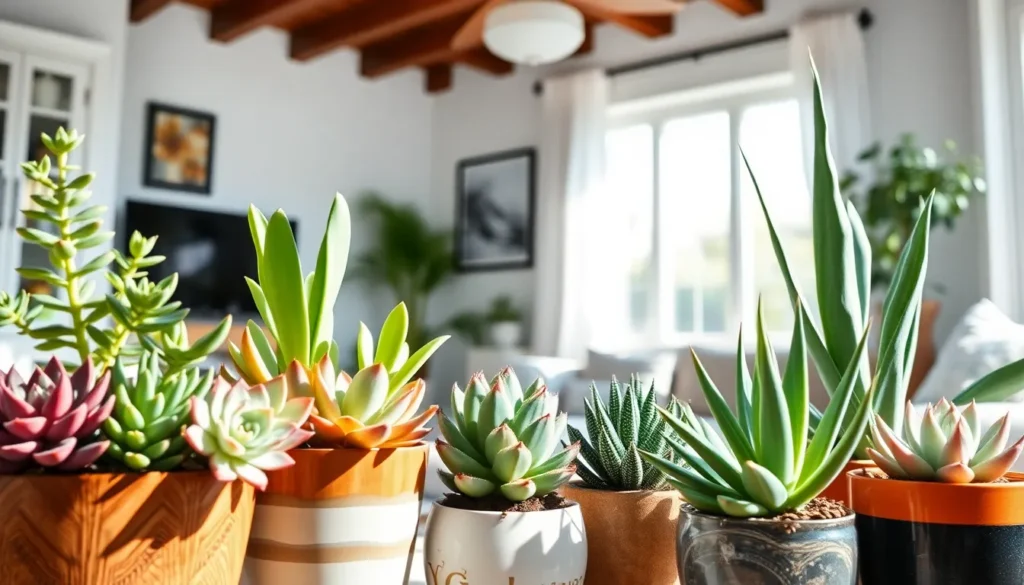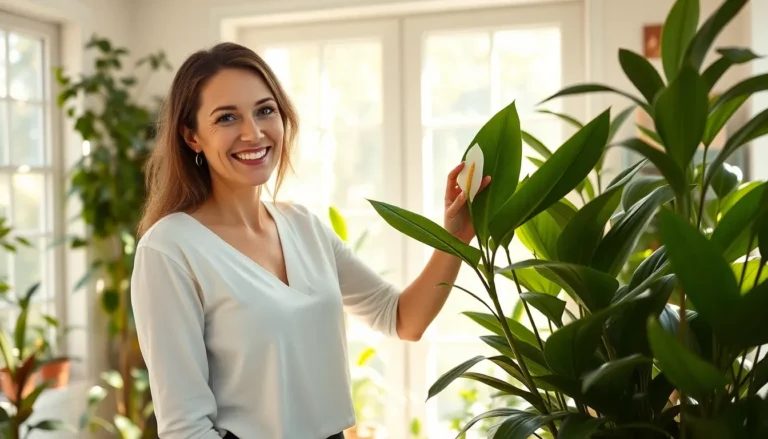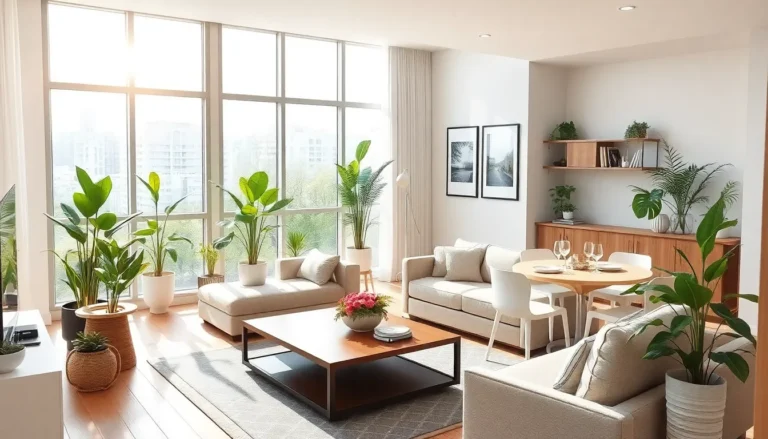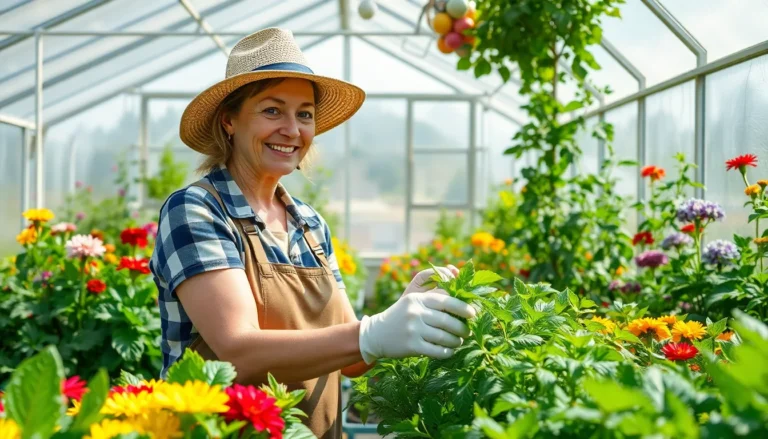Table of Contents
ToggleSucculents have taken the houseplant world by storm, and for good reason. These charming little green wonders not only add a splash of life to any space but also require minimal care—perfect for those who might not have a green thumb or simply forget to water their plants. With their quirky shapes and vibrant colors, succulents are like the cool kids of the plant kingdom, effortlessly turning any dull corner into a botanical wonderland.
From the iconic Aloe Vera to the delightful Echeveria, the variety of common succulent houseplants is as vast as a desert landscape. They’re not just pretty faces; many offer health benefits or unique textures that can elevate your decor. So whether you’re a seasoned plant parent or just starting out, it’s time to embrace the succulent craze and discover how these low-maintenance beauties can transform your home into a lush oasis.
Overview Of Common Succulent House Plants
Succulent house plants thrive in various indoor environments due to their unique adaptations. They store water in their leaves, stems, and roots, which allows them to endure periods of drought. Popular types include Aloe Vera, known for its soothing gel, and Echeveria, favored for its ornamental rosette form.
Sedum, another common choice, features a variety of species that range from ground covers to upright varieties. They often bloom with small, star-shaped flowers, adding color to indoor spaces. Haworthia presents striking patterns on its leaves, making it an attractive option for collectors.
Jade plants, or Crassula ovata, symbolize prosperity and good luck. Their robust structure allows them to grow well in potting soil or cactus mixes. Additionally, Christmas cactus provides a seasonal display with its vibrant blooms around the holidays.
Succulents are mostly low-maintenance, requiring infrequent watering. It’s crucial to allow the soil to dry completely between waterings to prevent root rot. Providing bright indirect light promotes healthy growth and helps maintain vibrant colors. Most succulents adapt well to temperature fluctuations, enhancing their suitability for home environments.
Incorporating these plants into home decor creates visual interest, while their health benefits contribute to indoor air purification. Succulents, available in various shapes and colors, encourage creativity in arrangement and presentation. By selecting a range of species, it’s possible to design a stunning and varied indoor garden that enhances both aesthetic appeal and air quality.
Benefits Of Growing Succulents
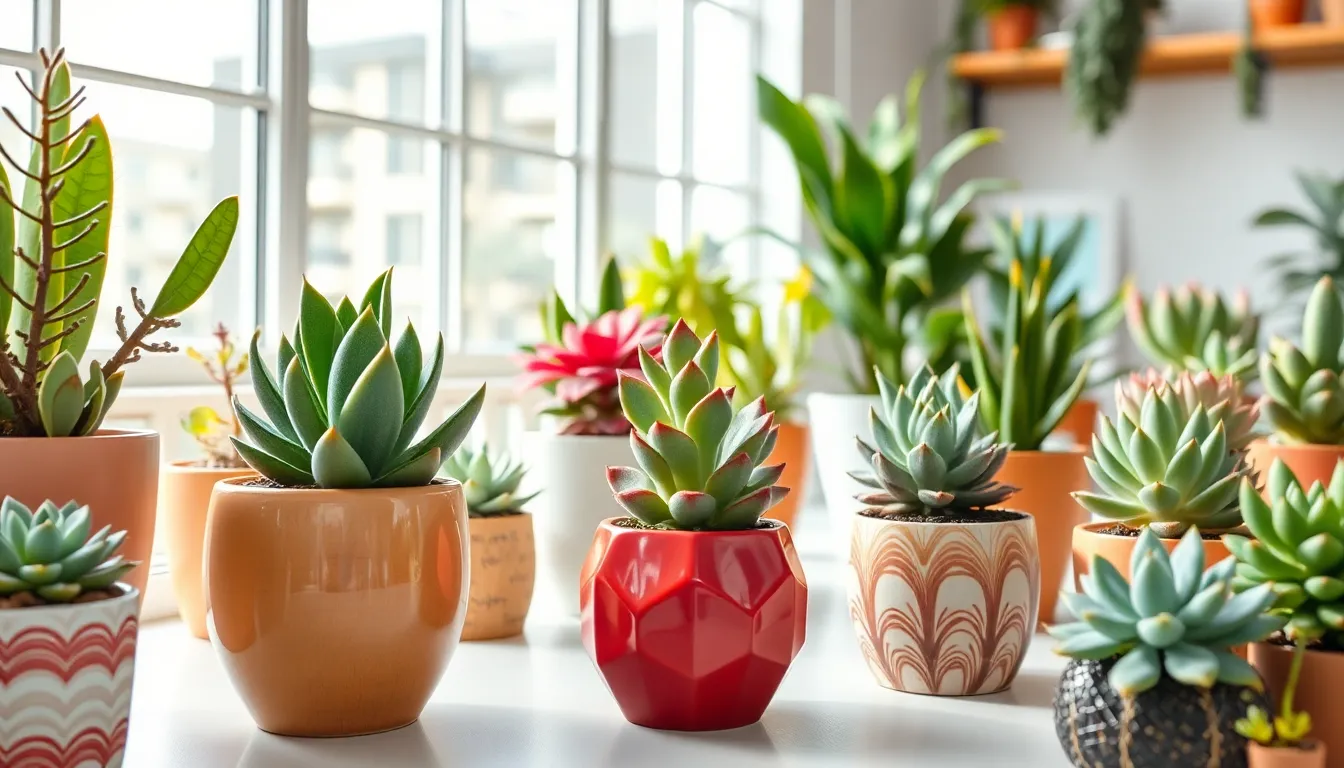
Succulents offer numerous benefits for indoor spaces. Their adaptability and aesthetic appeal make them a favorite among plant owners.
Easy Maintenance
Low upkeep defines succulents. Watering them requires infrequent sessions, typically every two weeks. Minimal attention ensures their vibrant growth, perfect for busy lifestyles. Potting soil with good drainage supports their needs, preventing root rot. Most succulents thrive in bright, indirect light, making placement easy in various rooms. Choosing hardy varieties leads to a resilient indoor garden, appealing to both beginner and experienced gardeners.
Air Purification
Indoor air quality improves with succulents. Various studies indicate that these plants filter toxins, enhancing living spaces. They absorb carbon dioxide and release oxygen, supporting better breathing conditions. Species like Aloe Vera and Echeveria contribute significantly to reducing air pollutants. Living near these plants promotes a healthier atmosphere, leading to improved well-being and productivity indoors. Tending to succulents not only beautifies home decor but also fosters a cleaner environment.
Popular Types Of Succulent House Plants
Succulents offer various appealing options for houseplants. Here are some popular choices.
Echeveria
Echeveria captivates with its rosette shape and vibrant colors. This succulent thrives in bright, indirect light and well-draining soil. Many varieties showcase striking hues from deep green to lavender, adding visual interest to any space. These plants require minimal watering, thriving best when allowed to dry out between sessions. Echeveria not only enhances home decor but also serves as an excellent air purifier, contributing to indoor air quality. The compact size makes them ideal for tabletops or windowsills, providing versatility in arrangement.
Aloe Vera
Aloe Vera stands out for its therapeutic properties and easy care. The fleshy leaves store moisture, allowing this succulent to withstand drought. Typically, it prefers bright light and well-draining soil to flourish. Many households benefit from keeping Aloe Vera on hand as its gel aids in soothing minor burns and skin irritations. This plant’s air-purifying qualities further elevate its appeal, filtering toxins from the air. Aloe Vera’s popularity among plant enthusiasts stems from its low-maintenance requirements and practical health benefits.
Jade Plant
Jade plants feature attractive, rounded leaves and are known to symbolize prosperity and good luck. This succulent flourishes in bright light and requires minimal watering. Over time, it may develop a tree-like appearance, making it an appealing focal point in any space. Jade plants adapt well to various indoor environments and thrive with good drainage and occasional feeding. Many people appreciate their low upkeep and resilience, making them an ideal choice for busy households. Also, their longevity often leads to a sense of attachment as they become a cherished part of home decor.
Care Tips For Succulent House Plants
Succulents require specific care to thrive indoors. Following a few essential tips ensures these plants remain healthy and vibrant.
Watering Techniques
Watering succulents involves a careful balance. Allow soil to dry out completely between waterings, as overwatering can lead to root rot. Most varieties thrive when watered every two to three weeks during the growing season. In winter, reduce watering frequency even further, ensuring soil remains dry. Use the soak and dry method by thoroughly soaking the soil, then draining excess water. Always check moisture levels before watering to prevent any issues.
Optimal Lighting Conditions
Providing adequate light is crucial for succulents. Most prefer bright, indirect sunlight for several hours each day. A south-facing window often offers the right conditions. If natural light is limited, consider using grow lights to supplement. Position plants close to a light source but avoid direct, intense sunlight to prevent leaf burn. Always monitor succulents for signs of insufficient light, such as stretching or faded colors, indicating a need for adjustment in lighting conditions.
Embracing succulent houseplants can transform any indoor space into a vibrant oasis. Their unique beauty and low maintenance needs make them perfect companions for plant lovers of all levels. By choosing varieties like Aloe Vera and Echeveria, individuals not only enhance their decor but also enjoy the added benefits of improved air quality and well-being.
With simple care tips in mind, such as proper watering and lighting, anyone can successfully cultivate these resilient plants. As they flourish, succulents bring a touch of nature indoors, creating a lively and inviting atmosphere that inspires creativity and joy.

